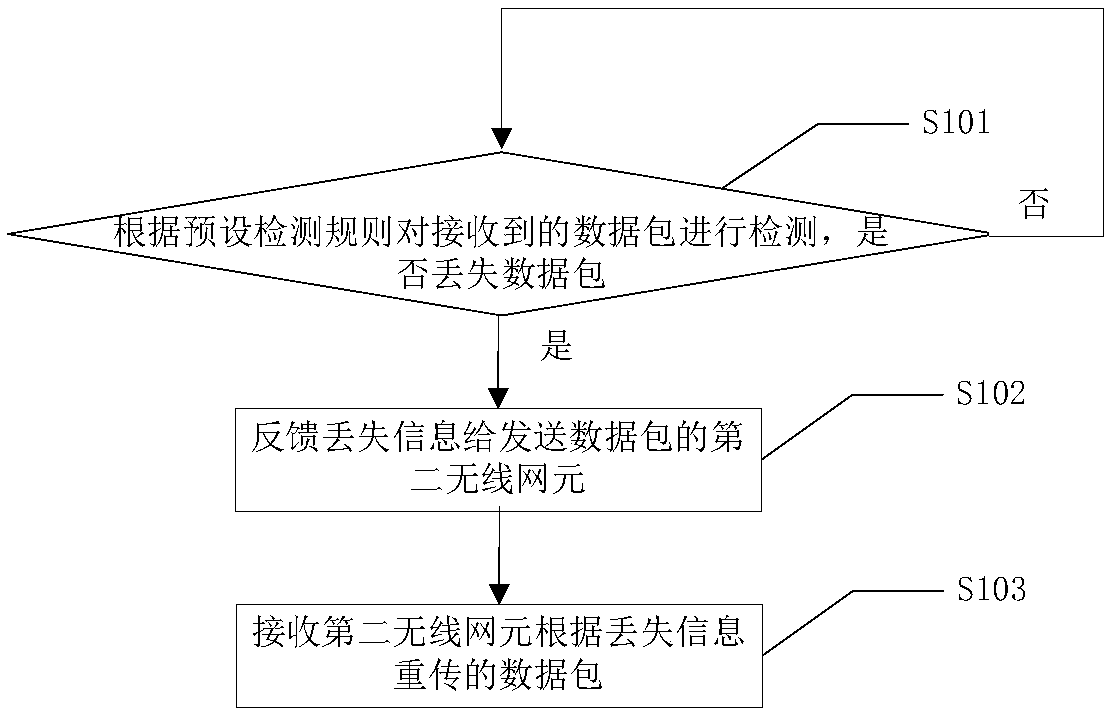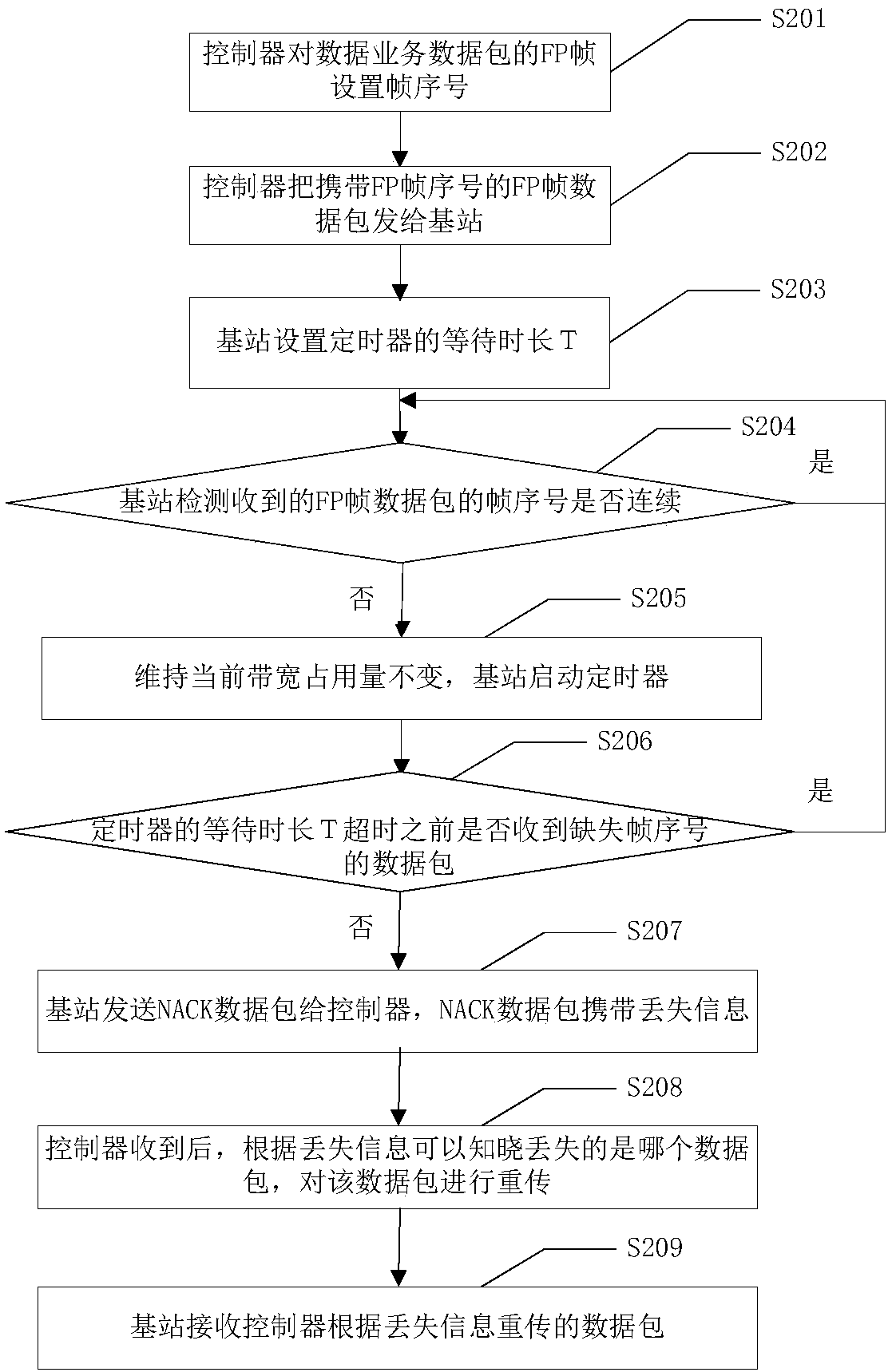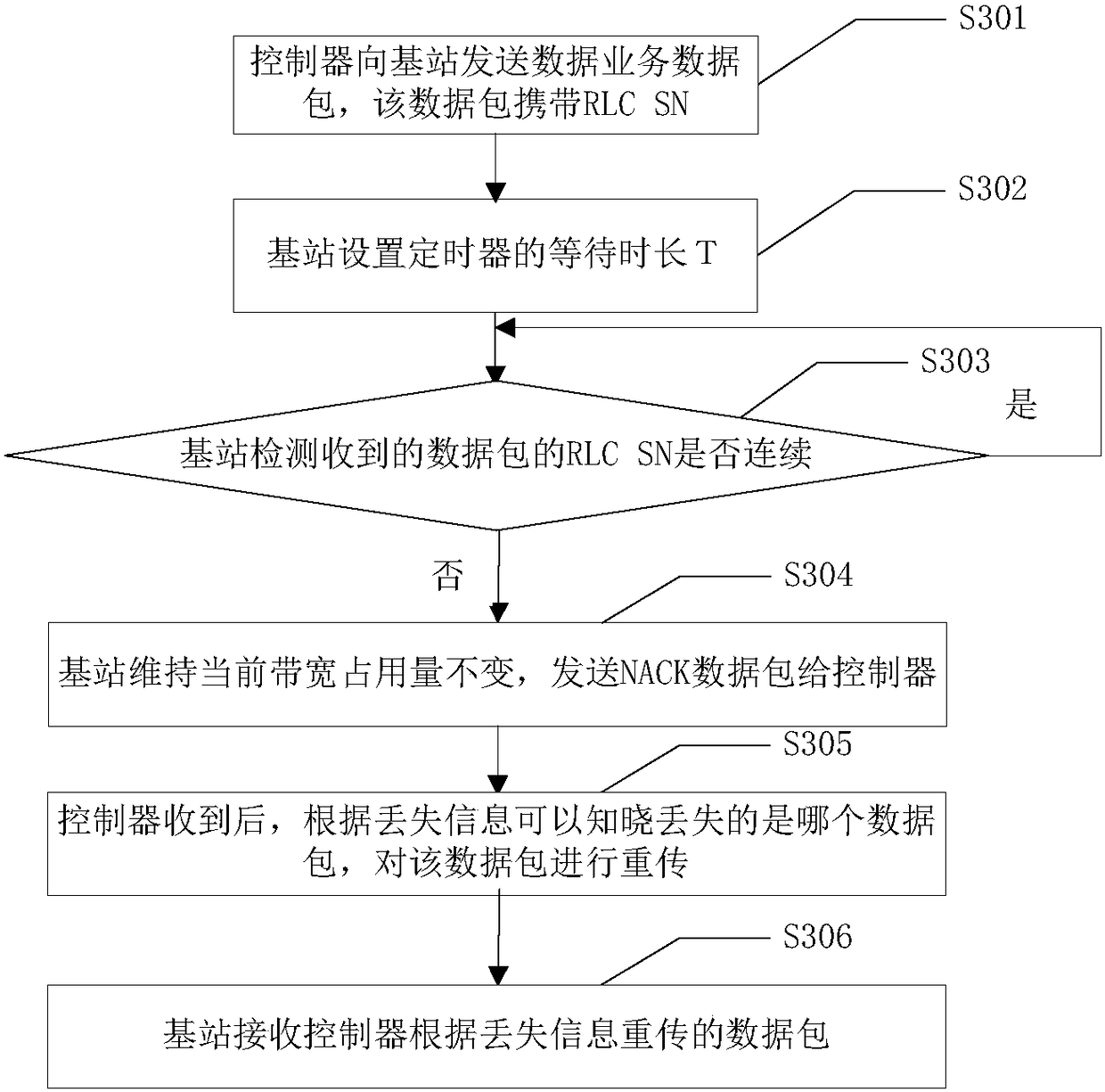Packet loss processing method and device, wireless network elements and computer readable storage medium
A processing method and technology of a processing device, which are applied in the electronic field, can solve the problems of large service delay, easily affecting voice quality, increasing transmission bandwidth and air interface resource consumption, etc., so as to avoid the consumption of air interface resources and the effect of avoiding occupation of transmission bandwidth.
- Summary
- Abstract
- Description
- Claims
- Application Information
AI Technical Summary
Problems solved by technology
Method used
Image
Examples
Embodiment 1
[0028] In order to solve the problems that the traditional transmission congestion control method has too much service delay, easily affects voice quality, and increases invalid transmission bandwidth and air interface resource consumption, this embodiment provides a packet loss processing method, which is mainly used in wireless network elements. Please see figure 1 , mainly including the following processes:
[0029] S101, the first wireless network element detects the received data packet according to the preset detection rules, and obtains the detection result, whether the detection result is a data packet loss, if so, proceed to step S102, if not, return to step S101 to continue detection .
[0030] Different detection rules may have different detection results. Therefore, when the detection result of this step is packet loss, it does not mean that packet loss actually occurred. It is only detected according to this detection rule, and a certain type of detection result ...
Embodiment 2
[0043] Taking the 3G network as an example, the wireless RAN side of the 3G network is divided into two wireless network elements, the controller and the base station. The network adopts the traditional transmission congestion control method, the service delay is too large, it is easy to affect the voice quality, and increase the invalid transmission bandwidth and air interface resource consumption. This embodiment provides the following packet loss processing methods, please refer to figure 2 , mainly including the following processes:
[0044] S201. The controller sets a frame number for an FP (Frame Protocol) frame of a data service data packet as a sending number: 0 to 255 frame numbers.
[0045] S202. The controller sends the FP frame data packet carrying the FP frame serial number to the base station.
[0046] S203, the base station sets the waiting time T of the timer according to the RTT delay of the IUB interface (the logical interface between the controller and the...
Embodiment 3
[0055] For data services, RLC (Radio Link Control, radio link layer control protocol) SN (Sequence Number, sequence number) can also be used as the sending sequence number of data packets. Taking 3G network as an example, in order to solve the problem of traditional transmission congestion control in 3G network Method The service delay is too large, it is easy to affect the voice quality, and increase the invalid transmission bandwidth and air interface resource consumption. This embodiment provides another packet loss processing method. Please refer to image 3 , mainly including the following processes:
[0056] S301. The controller sends a data service data packet to the base station, and the data packet carries an RLC SN.
[0057] S302. The base station sets the waiting time T of the timer according to the RTT delay of the IUB interface (the logical interface between the controller and the base station).
[0058] S303, the base station detects whether the RLC SNs of the r...
PUM
 Login to View More
Login to View More Abstract
Description
Claims
Application Information
 Login to View More
Login to View More - R&D
- Intellectual Property
- Life Sciences
- Materials
- Tech Scout
- Unparalleled Data Quality
- Higher Quality Content
- 60% Fewer Hallucinations
Browse by: Latest US Patents, China's latest patents, Technical Efficacy Thesaurus, Application Domain, Technology Topic, Popular Technical Reports.
© 2025 PatSnap. All rights reserved.Legal|Privacy policy|Modern Slavery Act Transparency Statement|Sitemap|About US| Contact US: help@patsnap.com



